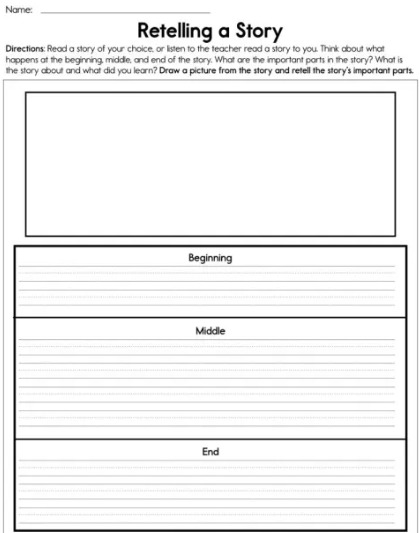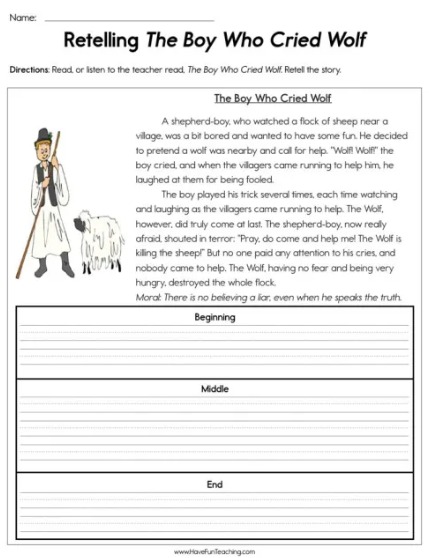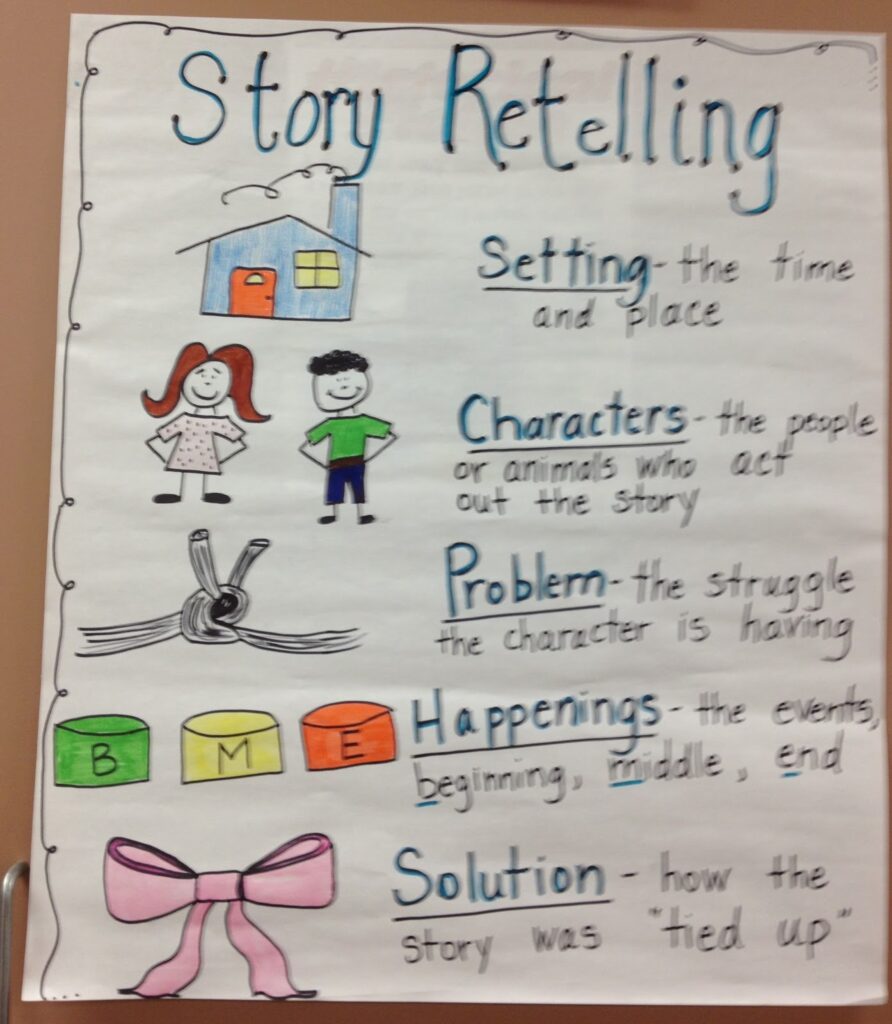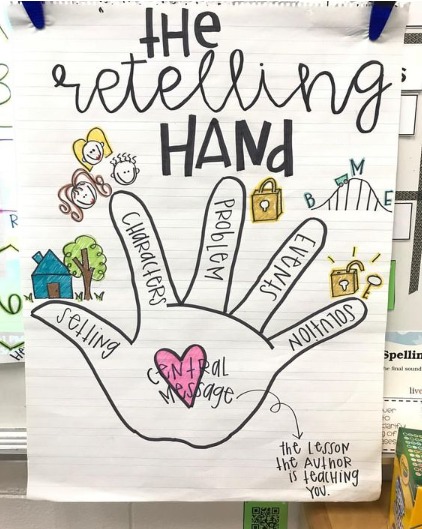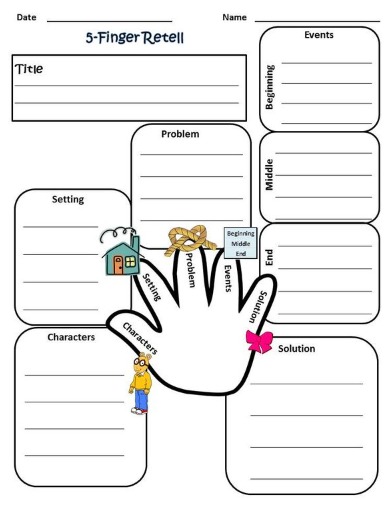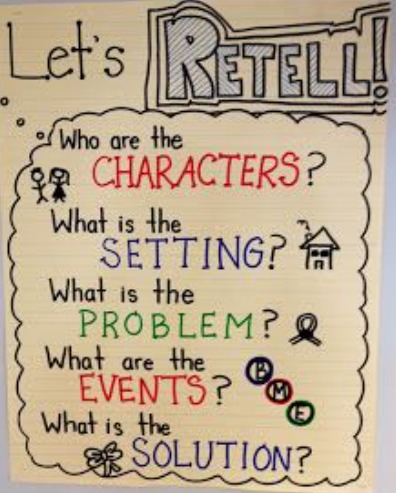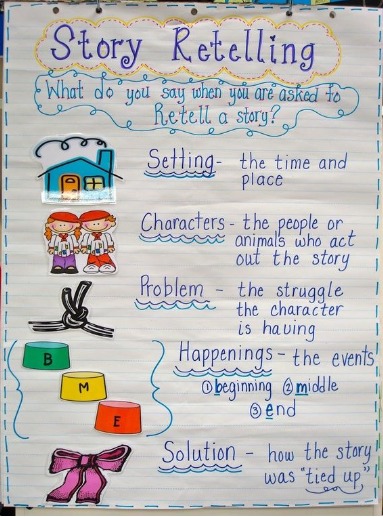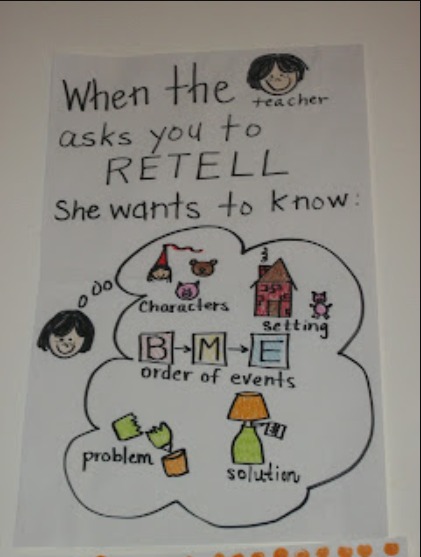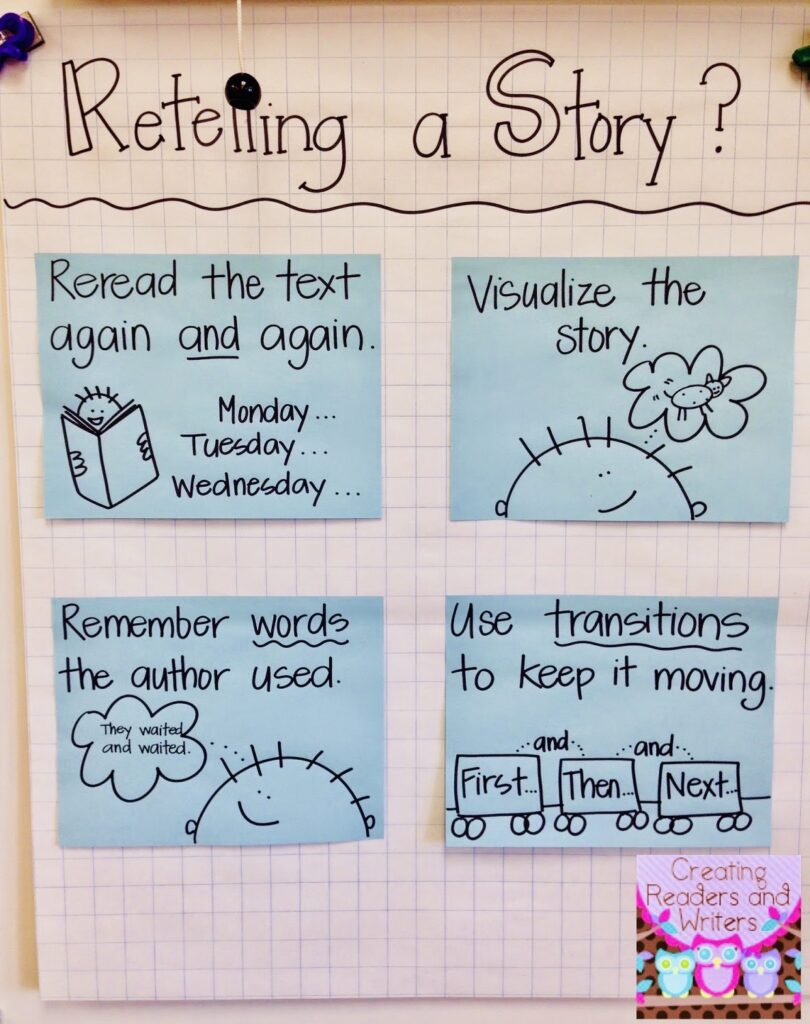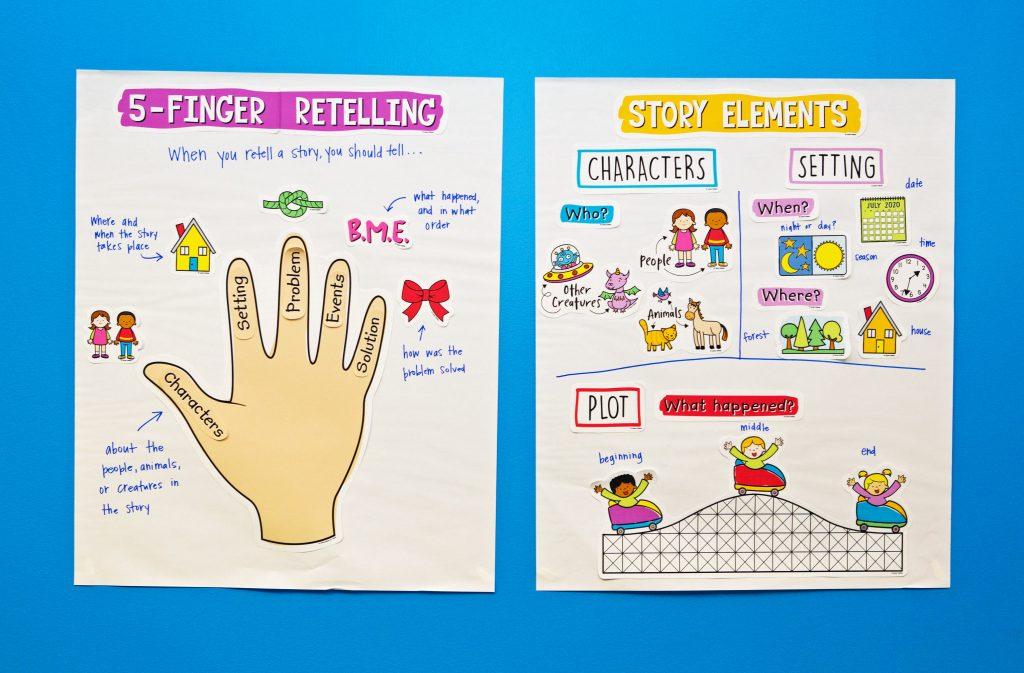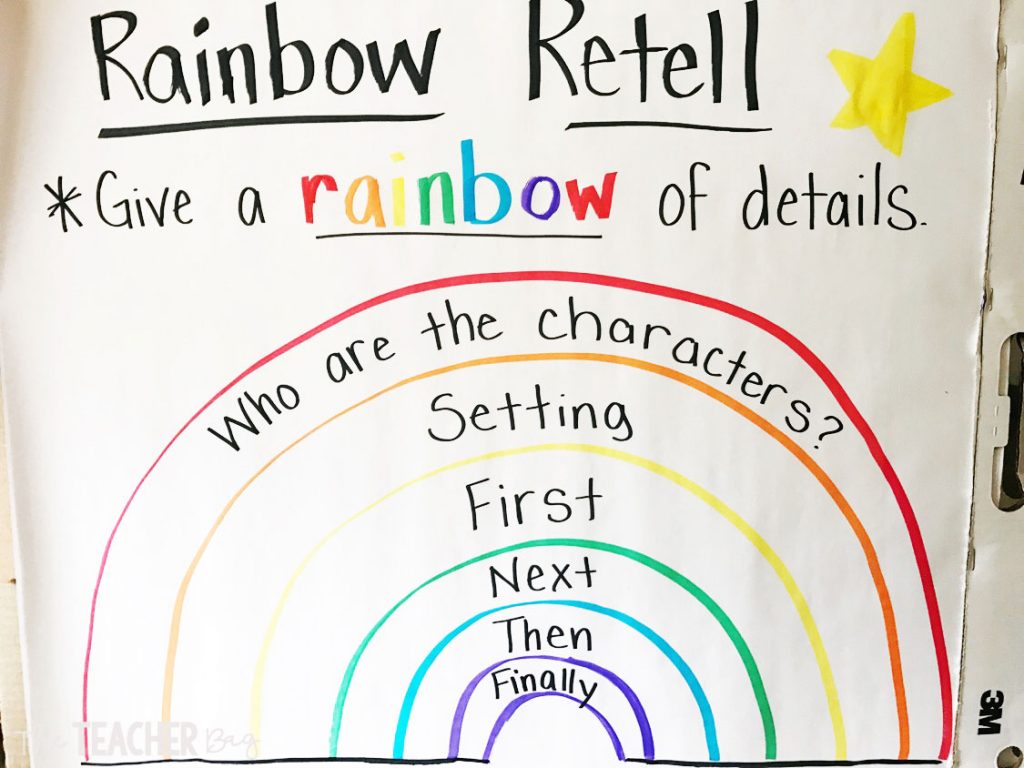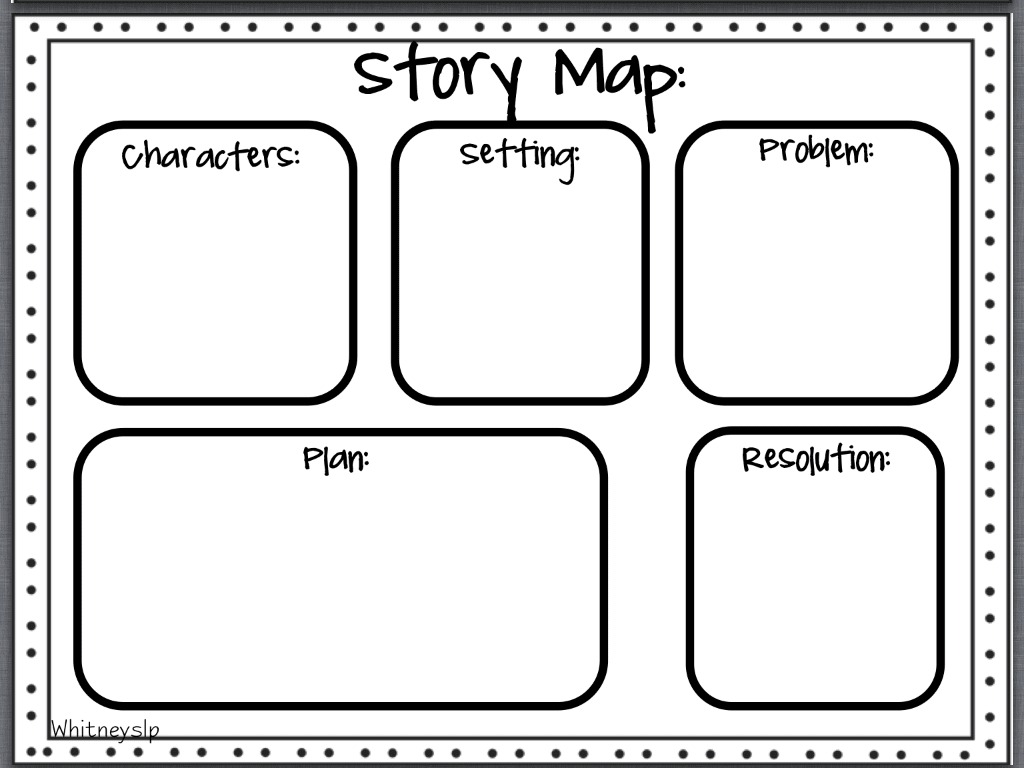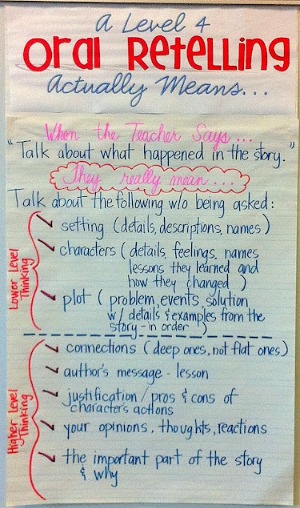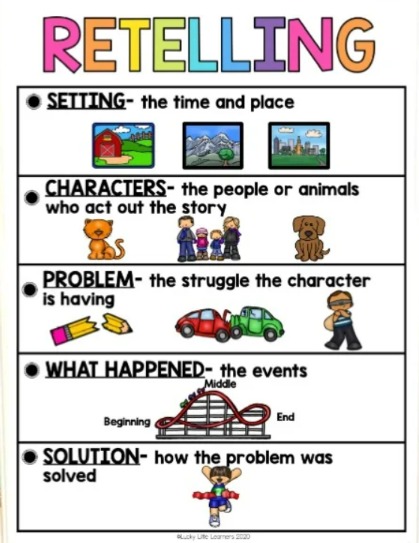“Can I tell you the story?” Isn’t that something you’ve heard your students ask? How many times are you given the whole story, not a potted version? You students tell you everything about a story, not the main points? They need to be taught to pull out only the necessary elements to retell a story effectively.
In this post, you will learn about retelling anchor charts. I will discuss what you should include or look out for in a good retelling chart. There are also 17 useful examples of anchor charts to work from.
Table of Contents
- What elements should be in a retelling anchor chart
- Using retelling anchor charts in different ways
- Resources from TeachSimple
- Inspiration for retelling anchor charts
- Additional resources
- Final thoughts on retelling anchor charts
What elements should be in a retelling anchor chart
A good retelling anchor chart should contain certain elements that will make it useful for the students and easier for you to use in your classroom.
Like any anchor chart, a good retelling chart needs to capture the students’ attention by using color, different fonts, headings and pictures.
The chart must state the five elements of a story that need to be identified: characters, setting, problem, events, solution.
The purpose and style of the anchor chart must be made clear:
- Information chart: It may give information about the five elements, which means identifying them and giving an explanation of each.
- Illustrative chart: It should name the elements and give an example of each from a specific story.
- Interactive chart: It should name the five elements necessary for retelling. Spaces must be left on the chart where students can fill in the points they work out from their analysis of a story.
The chart should use illustrations to help the students understand the elements of retelling. It can also include illustrations from sample texts the students will work from.
Using retelling anchor charts in different ways
Retelling a story is something that can be done in different ways. However, the same five elements must always be present. Anchor charts are the perfect way to present these and the process of retelling them in different ways.
Some anchor charts are quite formal and present the five elements of retelling in blocks, or as separate points in a list. These charts usually explain the points and then give a drawing to illustrate the essence of each.
There are some charts that are logically organized, but which are handwritten and use sketches that illustrate the elements, or examples from specific stories.
Other anchor charts are creative and use ideas like a hand to identify the main elements of retelling.
Resources from TeachSimple
- Retelling A Story Worksheet By Have Fun Teaching
This resource is a worksheet on Retelling a story. It can easily be adapted to function as an anchor chart. The blocks with the relevant instructions give the students the perfect opportunity to approach their texts creatively and to unpack them in different, but guided, ways.
- Retelling The Boy Who Cried Wolf Worksheet By Have Fun Teaching
This resource is also a worksheet on Retelling The Boy who Cried Wolf. It can easily be adapted into an anchor chart. In fact, the approach is one you can apply to a whole lot of different texts. The focus on the beginning, middle and end is very useful.
- Retelling The Story The Three Little Pigs Worksheet By Have Fun Teaching
This is a resource on Retelling the Story – The Three Little Pigs. It can be adapted into an anchor chart for students to work with in groups and to populate as they go. This will be a useful reference for when they work with other stories.
Inspiration for retelling anchor charts
- Story Retelling By The Happy Teacher
This is a bright anchor chart Story Retelling. The font, style and colors make the chart itself look like it is telling a story. This can help to guide the students through the process of pulling out the elements they need to retell the story.
- The Retelling Hand From We Are Teachers
Use this resource to introduce your students to The Retelling Hand. They will relate to the central image of the hand quite well. You can guide the students to create their own anchor charts, beginning with tracing their own hands. They can then literally use their own hand as a reminder when they are working on retelling a story.
- 5-finger Retell From 99Worksheets
The layout and set up of this 5-finger Retell is the perfect companion to the Retelling Hand. In fact, using the two anchor charts together would make this an even richer resource. It is appropriate for just about any grade, as it can be used as a template.
- Let’s Retell Anchor Chart By Susan Jones
The approach of this Let’s Retell anchor chart puts the emphasis on the students. By asking the key questions only and not using any examples, the chart places the students in the situation where they have to find the answers themselves. This would be a great guide for groupwork with a particular story.
- Story Retelling By First Grade And Flip Flops
The images in this Story Retelling anchor chart will give the students a lot of information. The image of the tope to suggest struggle and the ribbon to show the wrapping up are particularly rich. This is more of a reference anchor chart, from which the students will need to extract the points and apply them to their analysis of a story.
- When The teacher Asks You To Retell, She Wants To Know By Spotlight On Kindergarten
The heading of this anchor chart is long, but explanatory: When the teacher asks you to retell, she wants to know. I love the cartoon-like approach to the anchor chart. It puts the students in the position of wanting to contribute to the cartoon by speaking to the ‘teacher’.
- Retelling A Story By Creating Readers And Writers
This Retelling a Story anchor chart uses interaction to teach the students. The elements of retelling are written on post-its, which means they can be removed, added to and changed. You can work on each element with the students, then add them one at a time to the anchor chart. This will help the students build an understanding of the technique of re-telling and then to work with separate stories.
Additional resources
- 5-finger Retelling From Carson Dellosa Education
This is another resource that uses the hand in the 5-finger retelling approach. It could be an extension to the previous anchor chart that uses the hand as the image. The images that are linked to each element are a guide for the students. The explanations of each element add information that the students can use when they work on retelling stories.
- Rainbow Retell From The Teacher Bag
This Rainbow Retell anchor chart gives the students a different image to work with. The image is attractive for the students. The rainbow allows you to work on the different aspects of re-telling and then build the anchor chart.
- Story Map From K5 Learning
This is a great anchor Story map that gives students the space to fill in details about the story they are working on. It can be used as a template for different grades. The students will be able to fill in a different amount of detail, depending on their level.
- Oral Retelling Actually Means From 5th Grade Common Core
This anchor chart tells your students what Oral retelling actually means. It is a bit more theoretical, so it is aimed at the higher grades. You can use it as a reference for lower grades, though, by rephrasing the elements of re-telling. It is a great reference to display in the class.
- First To Five Retell From Mrs. Beattie’s Classroom
This chart is an extension of the five-finger approach, using First to Five Retell. The colors will attract the students’ attention. The way the images count up tells them that there is something that follows. You can link this to the anchor charts using the hand as a way to remember the five elements of re-telling.
- Fiction Texts From Hippo Hooray For Second Grade
This is a focused anchor chart on types of fiction texts, that can be retold. It is a different approach to re-telling anchor charts, because it foregrounds the type of story that is retold. This is relevant to lower grades, but can also be used with higher grades.
- Retelling Anchor Chart From Lucky Little Learners
This is a more formal Retelling anchor chart. The layout here is easy for the students to follow and the images are a great depiction of how the elements work. This anchor chart could be displayed in the classroom as a reference.
Final thoughts on retelling anchor charts
There are three styles of retelling anchor charts: those that give information, those that ask questions and those that provide space for the students to fill in their answers. They are all valuable and can be used successfully in relation to each other. The more informational charts can be displayed in the classroom, while the interactive charts can be used for students to apply what they learn.

